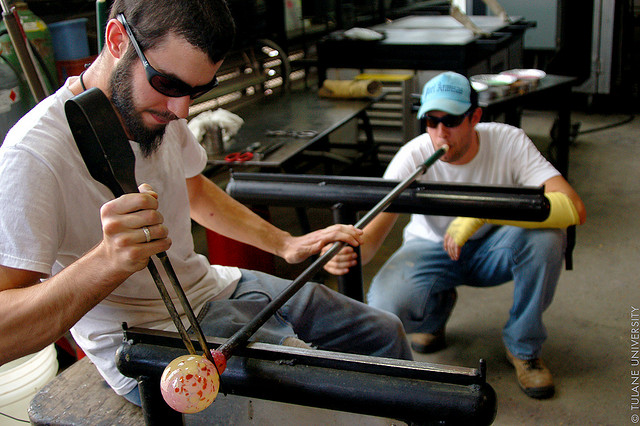Most people completely take for granted how wonderful glass really is. Even though it dates back to at least the 3rd century BC, glass was a luxury item until the 20th century. It is a wonderful material that human beings use in so many facets of modern life. Whether you are in the car, at home or at work, glass is protecting you from the weather outdoors while giving you tremendous visibility. Here is a look at the interesting process that is used to manufacture glass.

Gather Silica Sand
The first step that is used to make glass is to get a supply of silica sand. Silica sand is also known as quartz sand. The best silica sand will be free of iron. Iron is often found in silica sand deposits, and the iron will give a greenish tint to the finished glass. Clear glass is completely free of iron, or it has been treated with manganese dioxide to counteract the iron.
Additives
In the next step of the glass-making process, sodium carbonate is added to the silica sand. This is done to lower the temperature necessary to make the glass, which lowers the amount of energy needed in the manufacturing process. The bad thing about sodium carbonate is that it makes it possible for water to pass through the finished glass. Therefore, calcium oxide is added with the sodium carbonate to negate the water-passing effect.
Other additives may be added to affect the quality of the finished glass. Sometimes lead oxide is added, which will give the glass a little extra sparkle. Magnesium oxide or aluminum oxide may be added to strengthen the glass. Lanthanum oxide is added if the glassmaker wants to make the glass refract light.
As previously stated, the presence of iron in glass will make it green-tinted, which is sometimes desirable. Sulfur can be added to give a glass a yellow, amber or brown coloration. Copper oxide is also sometimes added to get a green color in the glass.
Heat It Up
Once all of the silica sand and additives are mixed together, it is time to make the glass. The mixture is placed in a crucible or other heat-resistant container. The crucible is then heated to a high temperature in a furnace or kiln. Pure silica sand without any additives will need to reach a temperature of 4,172 degrees Fahrenheit to become glass. Adding sodium carbonate lowers that temperature down to 2,732 degrees Fahrenheit.
Get Rid of the Bubbles
One of the most common errors in finished glass is the presence of bubbles. These bubbles can be prevented by stirring the glass well when it is heated. Some manufactures will also add chemicals like sodium sulfate and sodium chloride to prevent bubbles from forming.
Shape the Glass
Once the glass is molten, it can be formed into almost any shape imaginable. Skilled glass blowers can create amazing designs with glass. Once the glass is molded, it is then allowed to cool. It then may be reheated below the point of melting to make it stronger.


